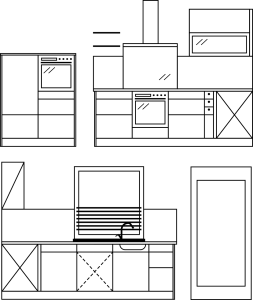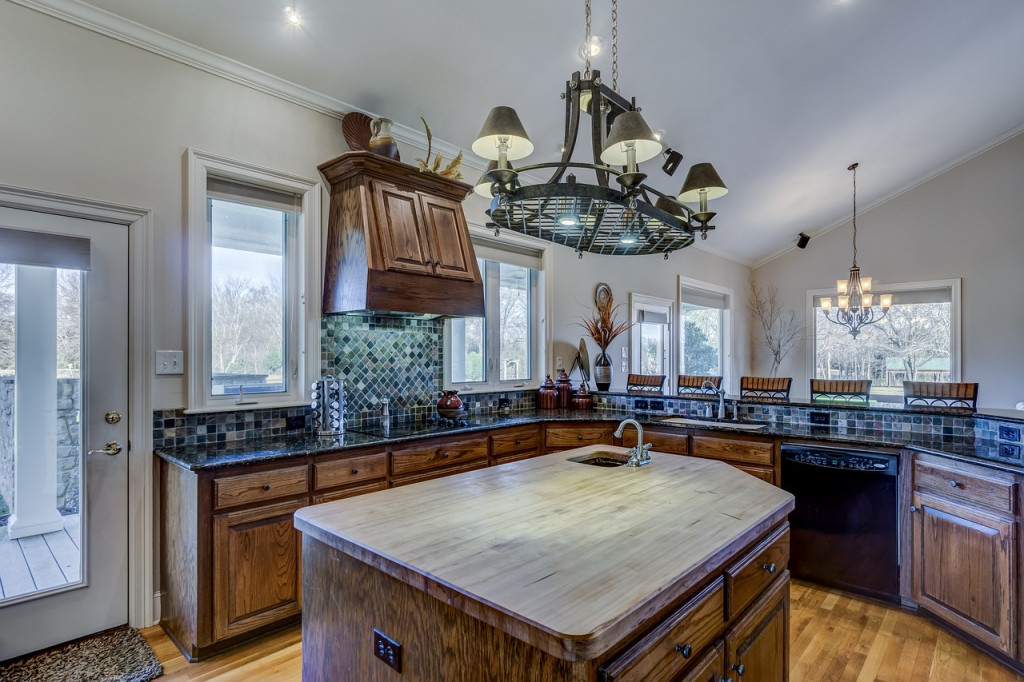Introduction
A Quick Summary of Cabinet Drawings
Cabinet illustrations are comprehensive illustrations that provide an extensive summary of the structure, style, and construction of a cabinet. They are utilized by cabinetmakers, home builders, and property owners to make sure that cabinets are built precisely and to the desired specifications.
Cabinet illustrations normally consist of the following info:
- Total dimensions of the cabinet.
- Material requirements.
- Hardware and accessory positioning.
- Joinery details.
- Finishing guidelines.
Why Cabinet Drawings Matter in Style
Cabinet illustrations are essential for creating functional and visually pleasing cabinets. They assist to guarantee that cabinets are the correct size and shape, that they are built to withstand everyday usage, and that they complement the total design of the area.
The Fundamentals of Cabinet Drawings
Comprehending Cabinet Anatomy
Before you can start drawing cabinets, it is essential to understand the basic anatomy of a cabinet. This includes the different parts of a cabinet, such as the carcass, doors, drawers, racks, and hardware.
Types of Cabinets
Base cabinets, wall cabinets, corner cabinets, pantry cabinets, and specialty cabinets are just a few of the many types of cabinets. There is a distinct style and construction feature for each type of cabinet.
The Importance of Accurate Measurements
Accurate measurements are important when developing cabinet drawings. Even a little mistake in. measurement can result in cabinets that are the incorrect size or that do not fit appropriately in the space.

Tools of the Trade
Vital Drawing Tools
There are a few essential illustration tools that you will need to develop cabinet illustrations. These include:
- Pencil and eraser.
- Ruler.
- Triangle.
- Compass.
- Drawing paper.
Software Application for Cabinet Drawings
There are likewise a number of software programs available that can be utilized to develop cabinet illustrations. These programs offer a range of functions, such as the capability to produce detailed 3D designs of cabinets and to create cutting lists.
Selecting the Right Materials
The kind of product you choose for your cabinets will depend on a number of aspects, including the. budget, the desired design, and the planned use of the cabinets. Some common cabinet products. consist of:
- Wood
- Plywood
- MDF
- Melamine laminate
- Metal
Beginning
Setting Up Your Workspace
Find a well-lit work area with a big table or desk. You will likewise need to collect your illustration tools and products.
Sketching Your Design
Start by sketching out your cabinet design on paper. You’ll have a chance to try this out. various ideas and to refine your style.
Creating for Performance
When developing your cabinets, keep functionality in mind. Think about how the cabinets will be utilized and what items will be saved in them. Ensure to develop cabinets that are the right size and height for the intended usage.
Measurement Mastery
Measuring Cabinets Properly
When measuring for cabinet drawings, it is necessary to be as accurate as possible. Utilize a ruler or determining tape to measure the width, height, and depth of the area where the cabinets will be installed.
Typical Measurement Mistakes to Prevent
Here are a couple of typical measurement errors to prevent:
- Not determining the area accurately.
- Not representing the thickness of the cabinet materials.
- Not accounting for the hardware and devices.
Precision in Every Inch
Even a little error in measurement can result in cabinets that are the wrong size or that do not fit. correctly in the space. Confirm all of your measurements prior to you start drawing your cabinets.
Designing Your Cabinet
Sketching Your Vision
As soon as you have a good understanding of the space where the cabinets will be installed and the. performance requirements, you can start strategizing your style. Experiment with different designs and styles up until you discover a style that you enjoy with.
Integrating Aesthetic Elements
When creating your cabinets, consider the total aesthetic of the area. The cabinets should complement the other style elements in the space, such as the counter tops, flooring, and backsplash.
Stabilizing Kind and Function
It is important to strike a balance between kind and function when creating your cabinets. The cabinets ought to be both functional and visually pleasing.
Preparing Detailed Plans
Moving Sketches to Plan
Once you have completed your design, it is time to begin preparing comprehensive cabinet drawings. This process includes moving your sketches to plan paper and including all of the essential dimensions and information.
Producing In-depth Elevation Illustrations
Elevation illustrations reveal the front, back, and profiles of the cabinets. These illustrations should consist of all of the hardware and accessory placement information.
Creating for Personalization
If you are designing customized cabinets, it is essential to consist of all of the necessary customization details in your drawings.
Joinery Techniques
Understanding Joinery
Joinery is the procedure of linking two or more pieces of wood together. There are several types of joinery methods, each with its own advantages and downsides.
Different Types of Joints
Some typical joinery techniques include:
- Butt joint
- Dado joint
- Rabbet joint
- Lap joint
- Miter joint
- Mortise and tenon joint
- Dovetail joint
Joinery for Sturdiness
When selecting joinery strategies for your cabinets, it is essential to consider the resilience of the joint. The joint ought to be strong enough to withstand the everyday use of the cabinets.
Case Researches
Real-Life Examples of Cabinet Drawings
Here are a couple of real-life examples of cabinet illustrations:
- A cabinetmaker creates a comprehensive set of drawings for a customized kitchen island
- A designer creates a set of illustrations for a brand-new line of bathroom vanities
- A homeowner creates a set of illustrations for a built-in entertainment center
Success Stories in Cabinet Style
Here are a couple of success stories in cabinet style:
- A cabinetmaker wins an award for his custom-made kitchen cabinets.
- A designer releases an effective line of bathroom vanities.
- A house owner constructs a beautiful integrated entertainment center utilizing their own cabinet drawings.
Summary
Secret Takeaways
Here are a few vital focal points from this aide:
- Cabinet illustrations are necessary for creating functional and visually pleasing cabinets.
- Accurate measurements are essential when creating cabinet drawings.
- There are a range of joinery techniques that can be used to construct cabinets.
- The right hardware can make a big distinction in the look and performance of cabinets.
- There are a number of advanced cabinet drawing techniques that can be utilized to produce more complex and sophisticated designs.
- CAD software application can be used to create comprehensive and precise cabinet illustrations.
- It is important to interact your style concepts clearly to the builder if you are employing a builder to build your cabinets.
- While planning for your bureau project, it is vital for figure the expense of items, work, and equipment.
- It is vital to set useful assumptions for how long the undertaking will expect to wrap up.
- Creating a portfolio of your work is essential if you are a cabinetmaker or designer.
- There are different ways of showcasing your bureau outlines, for example, making a webpage, posting your delineations on internet based advertises, or interfacing with potential clients.
- Among the best ways to draw in clients is to produce high-quality cabinet illustrations and offer. competitive costs and outstanding customer support.
Highlighting the Importance of Accuracy
Precision is necessary when developing cabinet drawings. Even a little mistake in measurement can result in huge issues. It is essential to confirm all of your measurements prior to you start drawing your cabinets.
FAQs – Cabinet Drawings
Answering Typical Questions
Here are some common questions about cabinet illustrations:.
- What are the various types of cabinet illustrations?
- What software application can I utilize to create cabinet illustrations?
- How do I measure for cabinet drawings?
- What are the most typical joinery strategies used in cabinet making?
- How do I select the appropriate cabinet hardware?
Professional Guidance on Cabinet Drawings
Here is some professional guidance on cabinet illustrations:.
- When developing cabinet illustrations, it is very important to keep the intended use of the cabinets in mind. Design the cabinets to be both functional and visually pleasing.
- Usage precise measurements and exact drawing methods to ensure that your cabinets are developed. properly.
- Choose the ideal joinery methods and hardware for your cabinets to ensure resilience and. performance.
- If you are hiring a home builder to construct your cabinets, offer them with an in-depth set of cabinet drawings and any other necessary info.
Conclusion – Cabinet Drawings
Wrapping Up Your Cabinet Illustration Journey
This guide has actually provided you with a thorough overview of cabinet drawings, from the fundamentals of cabinet anatomy to sophisticated methods and digital tools. You now have the knowledge and abilities required to create your own comprehensive and precise cabinet drawings.
Encouragement for Aspiring Cabinet Designers
If you have an interest in ending up being a cabinetmaker or designer, I motivate you to pursue your enthusiasm. Cabinet illustration is a fulfilling and imaginative ability that can lead to a satisfying profession.
Here are some additional pointers for striving cabinet designers:
- Establish your style skills. The very best cabinet designers have a strong understanding of design concepts and elements. Take classes or workshops to establish your design abilities.
- Study the work of other cabinetmakers. Look at publications, books, and websites to see what. other cabinetmakers are doing. Take note of the information, such as the joinery, hardware, and surfaces.
- Investigate different items and strategies. There are numerous building methods. cabinets. Make sure to various materials and systems to find what turns out best for you.
- Fabricate an arrangement of your work. Take pictures of the cabinets you make and put them in a portfolio after you’ve made a few of them. This will help you promote your skills to potential customers.
The Future of Cabinet Design
The future of cabinet style is bright. As innovation continues to evolve, we can expect to see brand-new and ingenious ways to develop and build cabinets. For example, virtual reality (VR) and enhanced reality. ( AR) could be used to develop immersive experiences that enable customers to see and interact with their cabinets before they are developed.
Another trend in cabinet style is the use of sustainable products. Cabinetmakers are increasingly utilizing recycled and recovered products to develop cabinets. This is a positive pattern, as it helps to lower the ecological effect of cabinet making.
If you are interested in a profession in cabinet design, there are many opportunities readily available. With difficult work and dedication, you can become a successful cabinet designer and develop stunning and functional cabinets for your customers.

